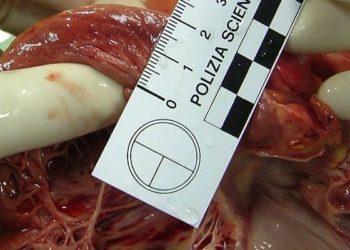Resuming oral anticoagulant (OAC) therapy after an OAC-related bleed associated with higher rates of bleeding
1. Resuming oral anticoagulant (OAC) therapy after an OAC-related bleed was associated with higher rates of subsequent bleeding, but lower rates of thrombosis and all-cause mortality.
Evidence Rating Level: 2 (Good)
While oral anticoagulants (OACs) are used to prevent thrombosis, a common adverse side effect with OAC usage is bleeding. A clinical dilemma occurs when deciding whether or not to resume OACs after a bleed. Past research has shown that 50% and 64% of patients permanently stopped OAC usage after a gastrointestinal (GI) and intracranial bleed respectively. As well, previous studies have focused more on warfarin use after bleeding, and not so much on direct OACs (DOACs), which are the primary preventative measure for stroke due to atrial fibrillation. Therefore, the current study aimed to compare bleeding, thrombosis, and all-cause mortality outcomes between patients who did or did not resume OACs, after a bleeding event related to OAC use. Data was gathered between 2012 and 2017 from patients aged 66 years and older, who had a hospital admission related to bleeding, and a prescription for an OAC within 100 days prior to admission. Of the 6793 patients in the study, 70.5% of patients resumed using an OAC within a year of admission (71.6% for GI bleed, and 45.6% for intracranial hemorrhage). For all categories of bleed, there was a lower rate of thrombosis for those who resumed OACs (10.0% vs 14.9%, adjusted hazards ratio 0.60, 95% CI 0.50-0.72). However, the rates of bleeding were higher in those who resumed OACs (35.2% vs 16.4%, adjusted HR 1.88, 95% CI 0.48-0.60). Additionally, there was a lower rate of mortality for those who resumed OACs (31% vs 54%, adjusted HR 0.54, 95% CI 0.48-0.60). These findings were generally consistent across GI bleeds, intracranial hemorrhage, and extracranial non-GI bleeds, although the rate of thrombosis for intracranial hemorrhage patients resuming OACs was no different from those who did not resume (HR 0.73, 95% CI 0.44-1.23). Overall, resumption of OACs after an OAC-related bleed was shown to reduce thrombosis and all-cause mortality rates significantly.
Click to read the study in CMAJ
Image: PD
©2021 2 Minute Medicine, Inc. All rights reserved. No works may be reproduced without expressed written consent from 2 Minute Medicine, Inc. Inquire about licensing here. No article should be construed as medical advice and is not intended as such by the authors or by 2 Minute Medicine, Inc.









